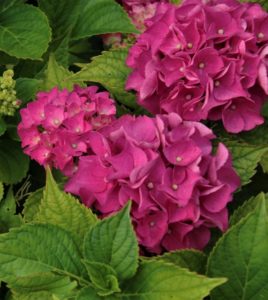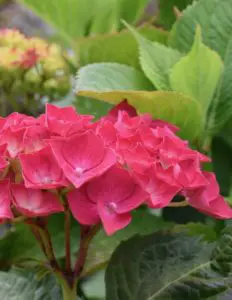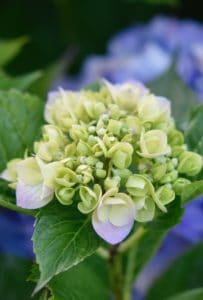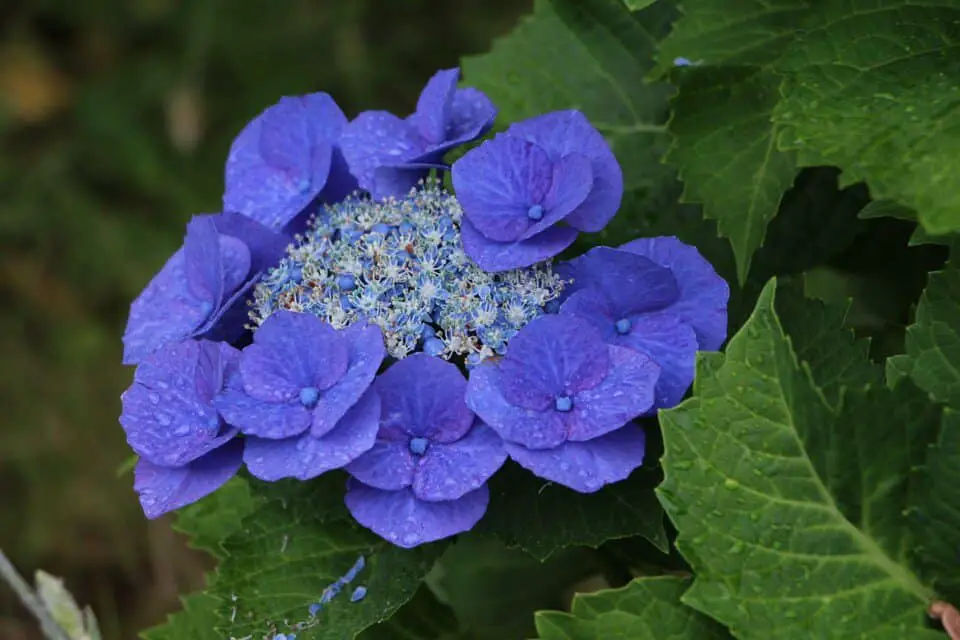Some links in the post are affiliate links and I get a commission from purchases made through some links found in the post.
If you had to choose the best blooming shrub for a garden, then the most experienced gardeners would recommend getting the hydrangea.
With its outstanding foliage, magnificent blooms, and numerous variations, hydrangeas may be grown in practically any garden.
Since you came across this article, you must be wondering whether the hydrangeas can be grown in shade or not.
Generally, hydrangeas do just fine in the full sun or in partial shade. A hydrangea living in shade depends on the species, they can live in full sun, or partial shade.
There is one exception and that is the Climbing Hydrangea. This particular species can thrive even in the full shade.
There are various factors that determine the shade tolerance and some types of hydrangea can survive in low-light environments too.
Can a Hydrangea Grow in Shade?
 The amount of light that a garden’s plants get varies. If there was a deep, total shade, the sun’s beams would never touch the earth.
The amount of light that a garden’s plants get varies. If there was a deep, total shade, the sun’s beams would never touch the earth.
On the other hand, full shade denotes the absence of direct sunshine but does not exclude a certain amount of filtered light.
Simply examine a specific area of your garden every hour or so from dawn to sunset if you are unclear about how much sun your yard receives.
From there, note if the area is sunny or shaded, and what is the length of the direct light. Usually, partial shade is when the sun hits the spot less than 4 hours a day.
Garden centers now sell sunlight estimators, which are a wonderful choice and will tell you exactly what kind of light is in your garden.
If your garden isn’t totally shaded, there are several plants you may grow, including certain types of hydrangea which are shade lovers.
Some hydrangeas enjoy light shade and partial shade, and those are the best living conditions for those plants.
The Hydrangea Macrophylla and Hydrangea Serrata can do just fine in mild shade, however, when it comes to deep and dark shade, then they can not do well.
Generally, for all species, the hydrangea shade requirement is to be placed in partial shade. The only variety of hydrangea that will thrive in the complete shade is the climbing hydrangea also known as panicle hydrangea.
Which Hydrangea Grows Best in Shade?
Oakleaf Hydrangea
Oakleaf hydrangea prefers shaded places, however, it may handle some direct light if watered properly. Oakleaf is a hardy natural plant that requires minimal upkeep.
The oak-leaf hydrangea likes full sun exposure in colder areas. However, this particular hydrangea shade tolerance is high in the hotter regions.
Hydrangea arborescens “Annabelle”
One of the most well-known hydrangeas is Hydrangea arborescens “Annabelle”.
In the late summer and beginning of autumn, this particular type produces huge flowers that resemble a sponge, and the plant itself has very soft green foliage.
This particular type of hydrangea can very well thrive in mild shade and even preferred this kind of environment. Therefore, if you have a mildly shaded area, the Annabelle hydrangea can be planted there.
Hydrangea Serrata
One well-known variety of free-flowering hydrangea Serrata is called “Bluebird.” The tiny blossoms are gentian blue in acidic soil and mauve pink in alkaline soil.
From late summer on, the leaf is flushed with plum purple, even in the shadow. Therefore this particular hydrangea shade tolerance seems to be pretty high, however, it enjoys the mild shade and not the full cover.
Hydrangea Macrophylla
Hydrangea macrophylla ‘Madame Emile Moulliere is a white mophead hydrangea, which is considered to be a shade-loving plant.
This particular one has a very unique trait, when grown in the sun, it has reddish tinges along the margins of the florets. In contrast, when planted in the shade, the flowers are completely white. Sounds amazing, right?
Snow Queen Hydrangea
Hydrangea Quercifolia, also known as Snow Queen is on the list of hydrangeas, that can withstand shaded areas. These rose blush-colored blossoms appear in the middle of summer.
The leaves begin the season in a very deep green, gradually changing to deep reddish bronze color, and ultimately finishing in that shade, offering a stunning splash of color to your fall landscape.
Will Hydrangeas Bloom in the Shade?
 A hydrangea’s blooming, the pace of development, and overall vigor and health are all influenced by the quantity of light it gets.
A hydrangea’s blooming, the pace of development, and overall vigor and health are all influenced by the quantity of light it gets.
Your light-shaded or partially-shaded hydrangea could be having trouble with insufficient lighting if it isn’t flowering or otherwise suffering.
In spite of this, your hydrangea should be okay if it is just partial shade and the plant receives 5-7 hours of strong sunshine each day. However, if they do not get enough sun, they can have fewer flowers and less striking colors.
Climbing hydrangea is like a vine and has beautiful blooms. Even though it prefers to get a little sun, those hydrangea blooms in shade too.
Climbing hydrangeas are a great choice for those spots that get a low amount of sunlight. This particular one can climb on different surfaces with its aerial roots.
At first, climbing hydrangea has a shrub -shape, however, once it gets growing, then slowly goes upwards. Climbing hydrangeas are annual, unlike the majority of hydrangea species.
The vine yields stunning, white Lacecap flowers during the whole growing season. The climbing hydrangea shade tolerance is very high and therefore, it will also bloom in the shade.
How to Care for Hydrangea in Shade
Soil
Although hydrangea prefers to be in rich, fertile soil, they can also withstand poor soil, only if it is well-draining. Hydrangeas prefer somewhat acidic soil.
You can apply a variety of soil additives designed the plants that enjoy a high level of acidity. Don’t be shocked if you notice that certain hydrangea blossoms change color when the soil’s acidity is changed.
Pink hydrangea blossoms can turn blue in an alkaline environment. Getting hydrangeas to bloom in a landscape that receives a lot of shade can be difficult.
However, if the soil is well-draining, rich, and fertile, that can make the hydrangea shade tolerance higher.
Fertilizer
One technique to satisfy the hydrangea plant’s nutrient needs is to add compost to the soil. Another option is adding fertilizer to your hydrangea several times when the growth season arrives.
Look for fertilizers that are made specifically for hydrangea plants. While liquid formulations may need applications every two weeks, slow-release fertilizers may only need two or three during the entire season.
Watering
Although hydrangeas need wet soil, those that are located underneath shade may not require as much water as the ones that are growing in the full sunlight.
In contrast to hydrangeas that grow in half shade, if your hydrangeas are in the shade, they may survive on the water provided by rain alone.
Having said that, regardless of where your hydrangeas are placed, keep an eye out for symptoms of dehydration. Your hydrangea is letting you know that it needs extra water if the leaves are drooping.
Final Thoughts
 It’s no surprise that hydrangeas have grown to be so well-liked among gardeners given their profusion of blossoms and remarkable adaptability.
It’s no surprise that hydrangeas have grown to be so well-liked among gardeners given their profusion of blossoms and remarkable adaptability.
There is a hydrangea for almost every garden since there are so many different types. The best light exposure for hydrangea plants is definitely not a complete shadow, with the exception of the climbing variety.
Those beauties prefer light shade to partial shade, especially in warm areas.
Your hydrangeas’ capacity to produce flowers as well as their pace of growth and development will be impacted by the amount of sun exposure.
Therefore, if you have them in extremely shaded areas, they may not thrive and bloom as well as they would in a normal environment.

